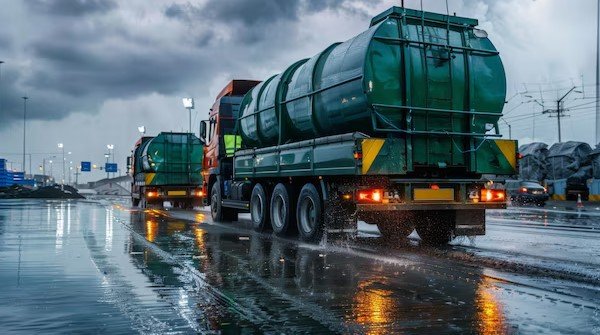The daunting task of relocating hazardous waste from the infamous Bhopal gas tragedy site is finally underway. On Wednesday night, 12 containers carrying 337 metric tonnes of toxic material left the Union Carbide factory site for Pithampur under tight security and careful planning.
A Mega Task 40 Years in the Making
The Union Carbide disaster, which occurred in December 1984, is etched into history as one of the worst industrial tragedies. Even after four decades, its toxic remnants linger, posing health and environmental risks. On December 3, 2024, the Madhya Pradesh High Court issued a stern four-week deadline to clear the site’s waste.
Officials took no chances. The 250-kilometer journey is being executed through a specially designated “green corridor” with stringent safety protocols. Traffic is halted within a 2-kilometer radius of the convoy, which is accompanied by five police vehicles, ambulances, fire brigades, and a quick-response team.

Each container has a unique identification number, and the route is carefully coordinated with local authorities. The trucks are traveling at a controlled speed of 40-50 km/h to ensure safety, stopping only at pre-designated points.
How the Toxic Relocation Is Being Managed
The relocation process officially started Sunday afternoon, with waste packed into secure bags over four days. By Tuesday night, the containers were loaded, and the convoy departed Wednesday evening.
The detailed logistics include:
- Safety Measures: Over 100 police personnel deployed, with containers escorted throughout the route.
- Container Design: Each vehicle is staffed with two drivers for seamless movement.
- Emergency Response: Ambulances and fire brigades are part of the convoy.
Gas tragedy relief department director Swatantra Kumar Singh assured that all measures have been taken to ensure safe transport and eventual incineration of the waste at Pithampur.
Protests and Concerns in Pithampur
Pithampur, an industrial town near Indore, is the designated site for incinerating the toxic waste. But this decision has been met with strong resistance from activists and local residents, who have long raised environmental and health concerns.
Several petitions have been filed in court demanding a halt to waste disposal in the area. The protests highlight fears of secondary contamination and long-term risks for nearby communities.
Despite this opposition, the government remains committed to its timeline, citing the High Court’s urgency. “The waste must be disposed of safely and without delay,” officials reiterated.
Historical Neglect and the Road Ahead
The clean-up effort comes after decades of delays and criticism. The High Court recently chastised the state government for its inertia, pointing out the 40-year-long stagnation in addressing the toxic legacy.
For many survivors and activists, the relocation is a bittersweet moment. While it marks progress, the tragedy’s broader impact—on health, livelihoods, and justice—remains unresolved.
The incineration in Pithampur, officials claim, will mark the final chapter of the site’s toxic history. But for those who have lived under its shadow, the scars are unlikely to heal soon.
